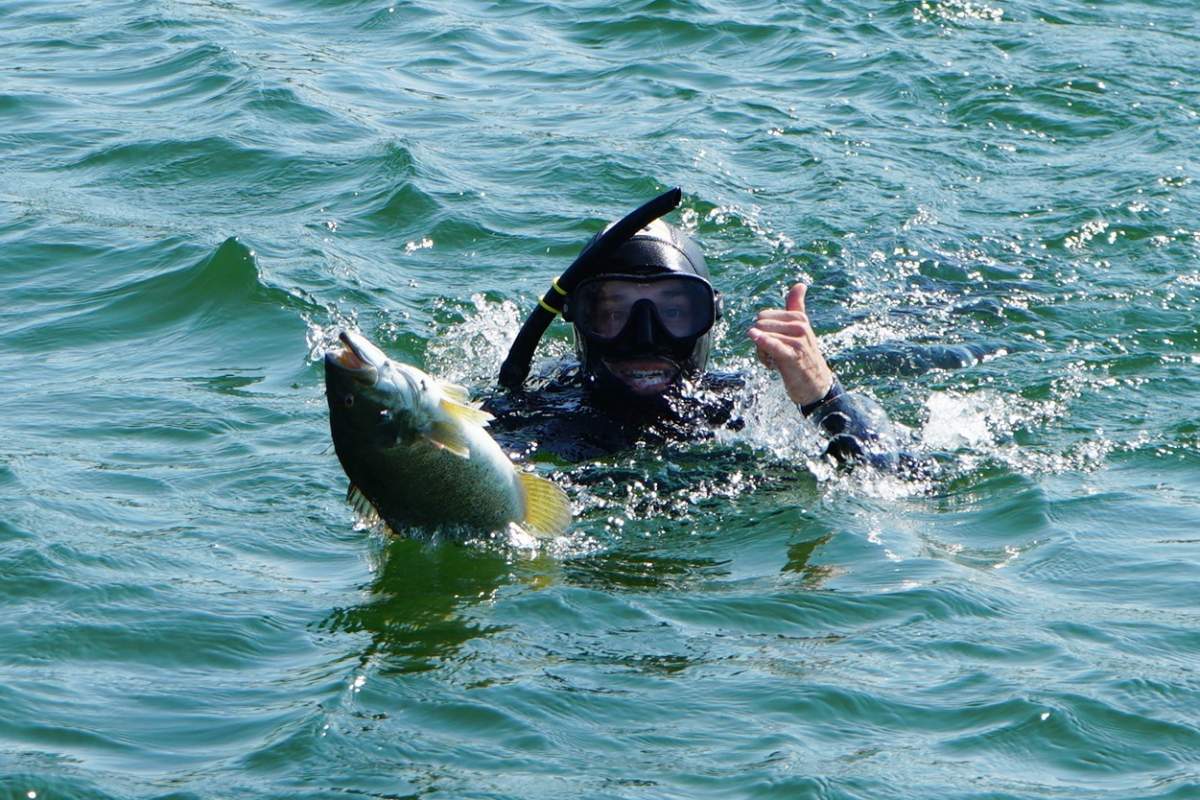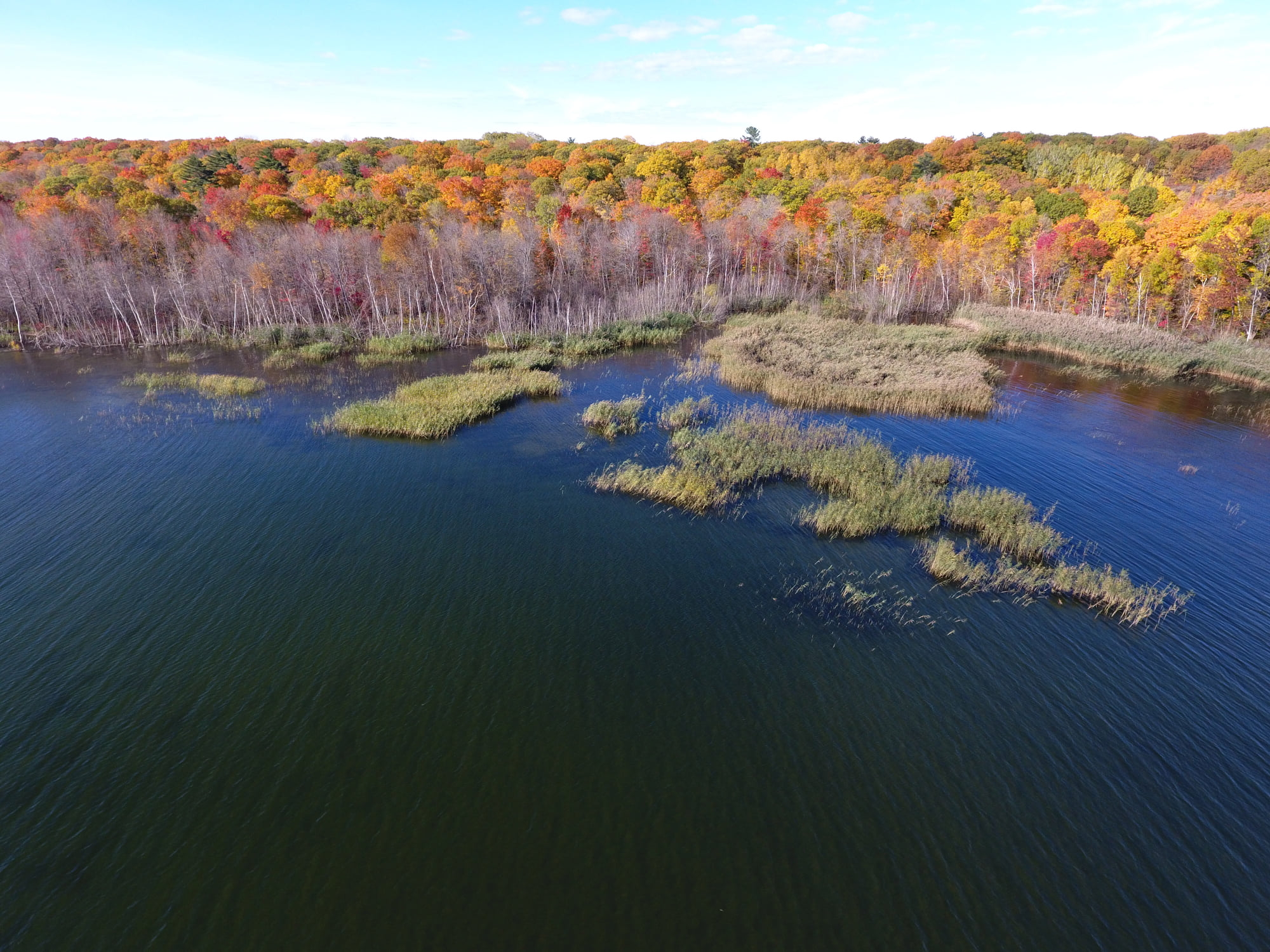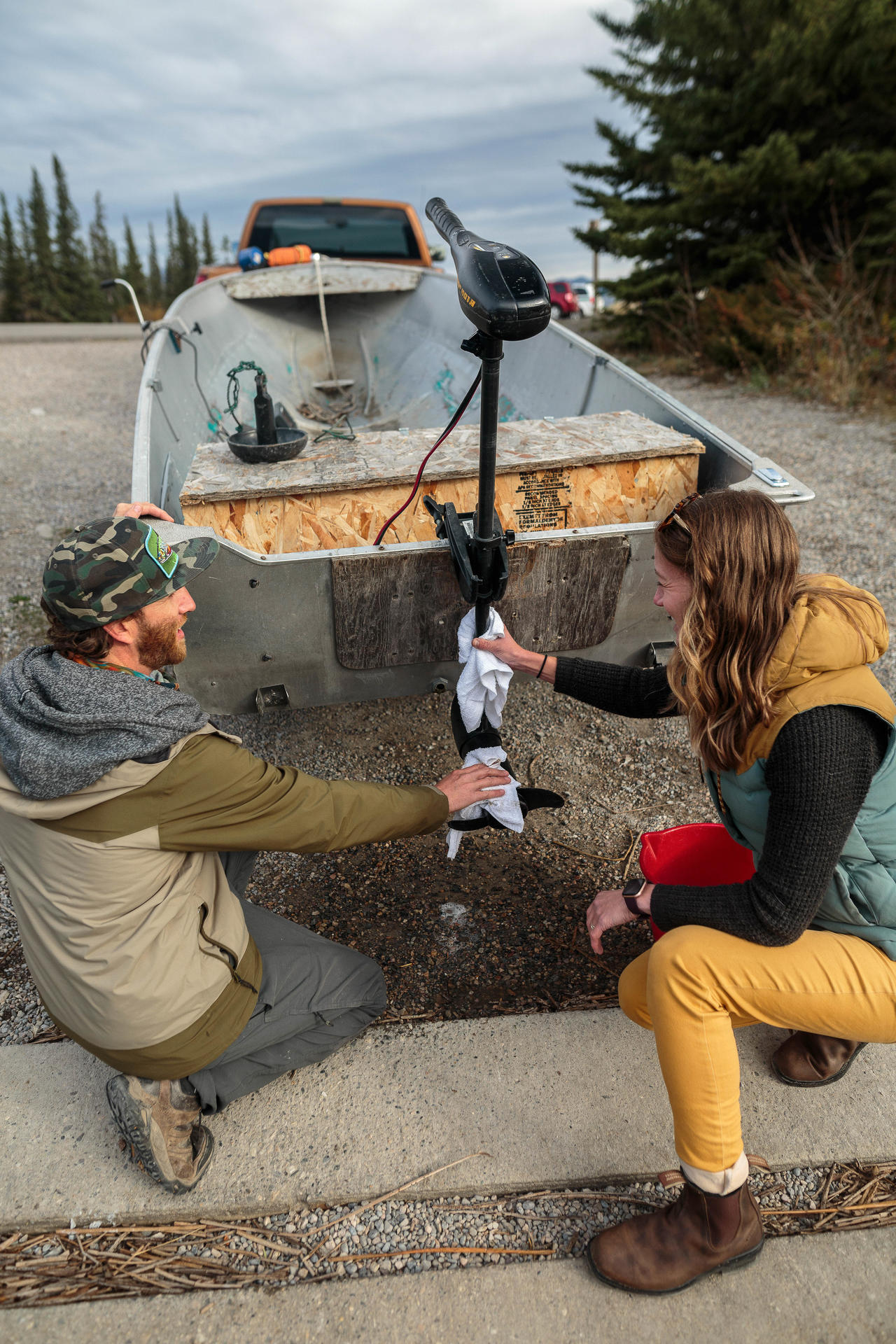Caption: Spearfishing for small mouth bass, an invasive species, in Noozaawinijing / Wagiiwing / Clear Lake, Manitoba. A program by the Keeseekoowenin Ojibway First Nation and Parks Canada.
Credits: Parks Canada
Aquatic invasive species threaten both natural and cultural values of heritage rivers. They can compete with native species and damage cultural landscapes. Climate change increases the risk of invasions by non-native species and decreases the efficacy of some management strategies. How can we mitigate the risks aquatic invasive species pose to heritage rivers as the climate changes?
The 2024 International Invasive Species and Climate Change Conference took place in January. It was hosted by the North American Invasive Species Management Association. This article provides a summary of some of the latest research presented at the conference and how it can apply to heritage rivers.
How does climate change influence invasions?
Climate change affects water cycles and causes changes to drought and flood patterns. Invasive species are sometimes more resistant to changes in these patterns than native species. For example, common reed (Phragmites australis) can withstand both dry and wet conditions, meaning it can survive a sudden flood in a dry habitat or a sudden drought in a wet habitat. Other species native to such habitats may not survive those dramatic changes. In such circumstances, common reed may take over the habitat that was once occupied by native species.
Caption: Common reed (Phragmites australis) taking over a bay.
Credits: Parks Canada
Warmer temperatures allow species to invade areas that were previously too cold for them to survive. Similarly, invasive species that are already present in Canada, but not yet problematic could become harder to manage in warmer temperatures. The populations of such invasive species are called sleeper populations. For example, in 2014, researchers Lavery et al. determined that the algae Didymo (also called rock snot), has been present in a lake in eastern Quebec since the 1970s at a low abundance. As air temperatures increased in the 1990s, it started blooming and threating local salmonid fisheries. Other sleeper populations could exist in heritage rivers.
How Does Climate Change Influence Management?
Climate change can influence the way that invasive plants react to herbicides. For example, some chemicals are less effective in warmer temperatures or with higher atmospheric carbon dioxide. As scientific advances help find solutions to these new management challenges, it is still important to stick to the basics. The practice of cleaning, draining, and drying boats and all equipment (i.e. waders, paddles) before moving to a new waterway remains an effective technique to prevent the spread of aquatic invasive species.
Caption: Clean, drain, dry remains a crucial step to prevent AIS spread.
Credits: Parks Canada
Another tactic is to improve our detection methods. Early detection leads to reduced reliance on chemical control methods. A team from the University of Hawaiʻi at Mānoa found that using citizen science dramatically increased the efficiency of their detection program. They previously had four to five full-time staff driving around the island monitoring for new invasive plants and found an average of eight individual invasive plants per year. Their new monitoring program relies on iNaturalist, an application where residents can log the species they see on their property or in public spaces. Using resident provided data, the team now detects and removes and average of 18 individual invasive plants per year.
Ending on a Good News Story
At the Delta Marsh in Lake Manitoba, invasive carp created clouds of sediment while searching for food at the bottom of the lake. As a result, light could not penetrate the water and plants struggled to grow. In 2013, Ducks Unlimited Canada started installing and now maintains exclusion barriers keeping the carp out of the marsh. Even though storms sometime damage the barriers, they were able to significantly reduce the carp population in the marsh. As a result, the marsh remains an important habitat for resident and migrating birds.
Ducks Unlimited Canada identified common factors shared between the Delta Marsh project and other successful projects. These are 1) clearly identifying the issue, 2) collaborating with partners, and 3) continuously raising awareness to gather support.
Thank you to Ducks Unlimited and all the conference presenters for sharing your knowledge of invasive species and climate change.
The information in this article is from the following presentations:
- Are they Sleeping? Understanding the possibility of invasive plants in the wake of changing climate by Dr. Ayodele O'uhuru, University of Massachusetts, Amherst
- Common Threads in Successful Invasive Species Management by Stuart Slattery, Ducks Unlimited Canada
- Early Detection in Real Time using iNaturalist by Molly Murphy, University of Hawaiʻi at Mānoa
- Neonatives & Range Shifting Species by Dr. Toni Lyn Morelli, US Geological Survey/Regional Invasive Species and Climate Change (RISCC) Management Network
- Taking Teachings from our Targets: How Storytelling Will Help Shape Invasion Biology in a Changing Climate by Dr. Jennifer Grenz, University of British Columbia.


